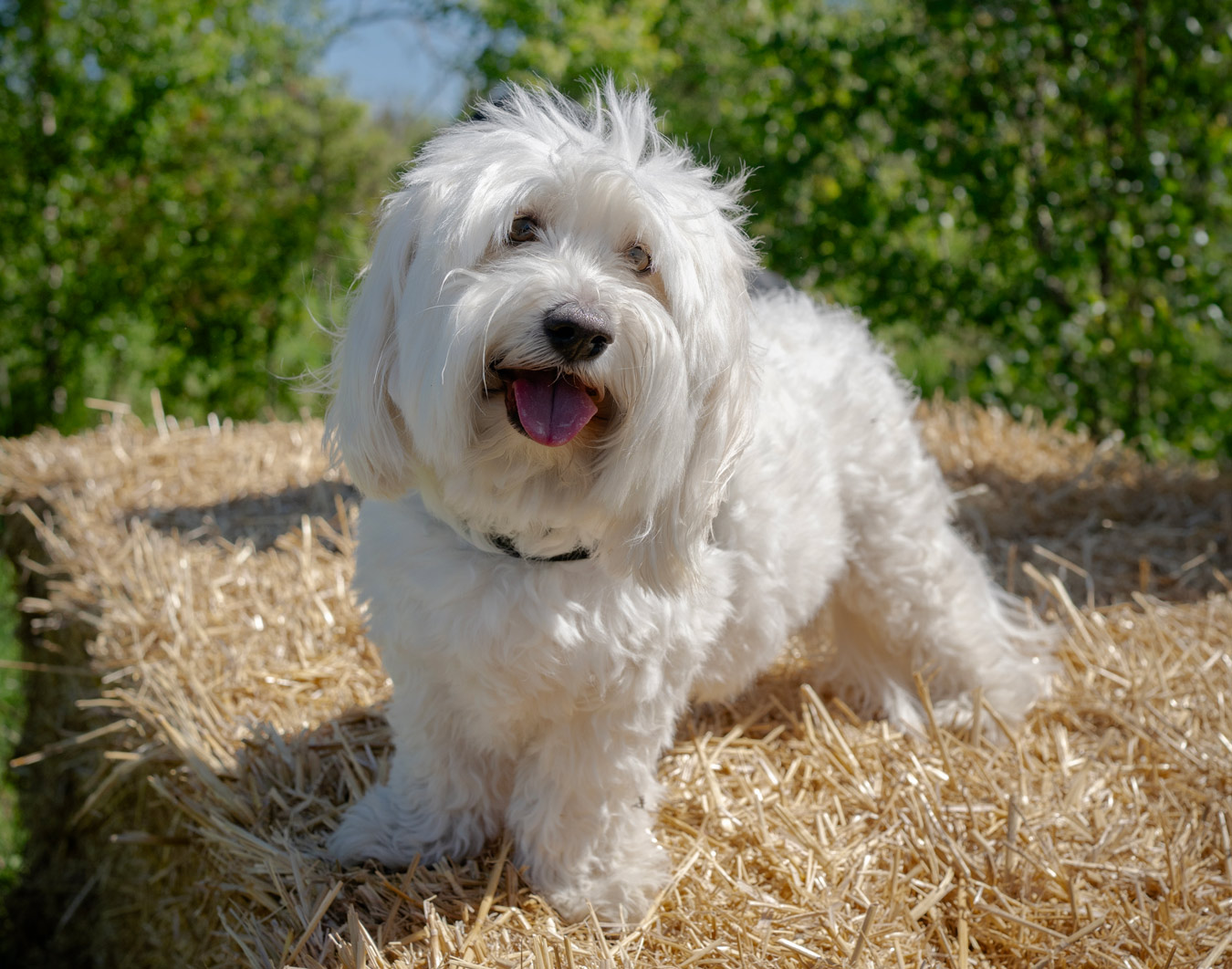
Our environmental project for thriving nature
At Partner in Pet Food Nordics AB, we want to take responsibility for our environmental impact and actively contribute to the transition to a sustainable society. As an aspect of our sustainability initiatives, we have invested in several concrete projects to support the climate and biodiversity. The investment comprises two parts: carbon sequestration by preserving and planting new forests, as well as actions in support of bees and wild pollinators.
Go directly to:
Overview: Our project sites
By focusing solely on domestic initiatives, we are taking part in the preservation and care of nature in Sweden. Proximity to the projects also offers us better insight and transparency with regard to the work, making it easier for us to ensure a direct and measurable effect on our local environment.

We are preserving forests and planting trees to sequester carbon dioxide.
The forest is our most important carbon sink. By planting more trees – which naturally capture carbon dioxide during the growth phase – we can remove more greenhouse gases from the atmosphere. In the project, we plant about 6 000 trees on Swedish soil, while ensuring that forests are preserved and managed sustainably to retain growth, to promote forest biodiversity and to adapt the forests to climate change. The project is estimated to bind a total of ca 600 tonnes of CO2e.
Trees are being planted in Tanum, Västra Götaland, and the forest being saved is located in Tväråträsk, Sorsele, Västerbotten. Planting will be underway throughout 2024, with some early planting in autumn 2023. Landowners for forest preservation are certified to FSC and PEFC for sustainable forestry.
Why are we doing this?
The Swedish forest is an important sink for greenhouse gases. Trees absorb carbon dioxide as they grow. And the more they grow, the more carbon dioxide they absorb. Planting more trees and preserving forests can therefore help combat climate change through sequestration of carbon dioxide. The Swedish forest is also home to a wide variety of plants and animals, and planting trees can increase biodiversity and help create new habitats for threatened species.
Objective: Increase the biogenic carbon sink in Swedish forests
The project is being carried out in partnership with the Swedish company Initiativ 1415 Initiative 1415 ensures to preserve and plant new forests in selected areas, in order to ultimately increase the biogenic carbon sink.
The carbon sequestration project is designed to combine carbon sink protection with the establishment of new forests. 20 percent of the sales price is earmarked for the preservation and enhancement of forest biodiversity, while also adapting the forest to climate change. The tree-planting model ensures the sequestration of 200 tons of carbon dioxide per hectare, or 100 kg per seedling, based on normal planting practices of 2,000 seedlings per hectare. To contribute to biodiversity, at least 15% deciduous trees are planted. Willow and rowan trees are planted on every hectare, because they offer the highest pollen and nectar values. Carbon sequestration in the preserved forest is calculated based on the forest management plan and therefore also determines a reference level that must not be undercut for the next 20 years.
In this way, it is ensured that the carbon sink does not decrease. A management measure could, for example, involve managing a key habitat or preserving and improving a habitat for an identified red-listed species in the area.
We promote pollinators and biodiversity
As a complement to Partner in Pet Food Nordics AB’s forest initiatives, we have also invested in concrete initiatives to preserve biodiversity. The work focuses on creating a beneficial environment for bees and other wild pollinators in Swedish farmland.
The biodiversity project is being carried out in Bålsta, Uppsala County. Within an area of one hectare, equivalent to a little more than one football field, we are building biotopes for pollinators on Swedish agricultural land. We are carrying out several concrete initiatives here to create habitats and food sources for bees and other insects. The measures are based on recommendations from the Swedish Environmental Protection Agency, Swedish Board of Agriculture and the County Administrative Boards of Sweden.
Among other things, we will:
- Plant selected varieties of trees and shrubs, such as oak, willow, rowan, white oak and hawthorn, guelder rose and blackberry – species that offer high biodiversity values.
- Sow wild meadows to produce pollen and nectar. Attracting many different kinds of pollinators requires a wide variety of flowers, preferably of different varieties so that something is in bloom throughout the season. We use Malmgård Viltfrö’s bee field mix with species that bloom from June to September.
- Put out two bales of straw, where bees and other insects can build nests.
- Set up two 10-tonne sand beds, where bees and other insects can build nests.
- Make two fauna depots with a blend of tree stumps, branches and twigs – dead wood that is essential for food and habitats for many plants, fungi, and animals.
- Expose rock to create warm surfaces for bees to enjoy.
- Establish a traditional hay meadow.
- Establish a mini wetland.
- Create a beetle bank.
Why are we doing this?
Bees and wild pollinators contribute to functioning ecosystems and our food supply. Upwards of 75% of all crops depend fully or in part on pollination from insects. This affects dog and cat food as well, which is at risk of becoming very expensive or difficult to find if wild pollinators disappear. Therefore, as Sweden’s biggest pet food producer, we cannot only focus on lowering our admissions and reducing our climate footprint – we must also take responsibility for biodiversity.
Objective: Increase the biodiversity of Swedish farmland
This project is being carried out in partnership with the Swedish company Initiativ 1415, and the investments are based on the cost of the measures required for implementation and to manage the area in a ten-year period. The project includes a situation analysis as well as monitoring and reports during years 1, 2, 3, 5 and 10 in order to determine the effects of the measures on biodiversity.
Internal events
As part of the project, we also carry out several activities together with management and employees. Our hope is that the initiative can create a ripple effect and motivate more people to take greater responsibility for the climate and environment, both privately and at work.
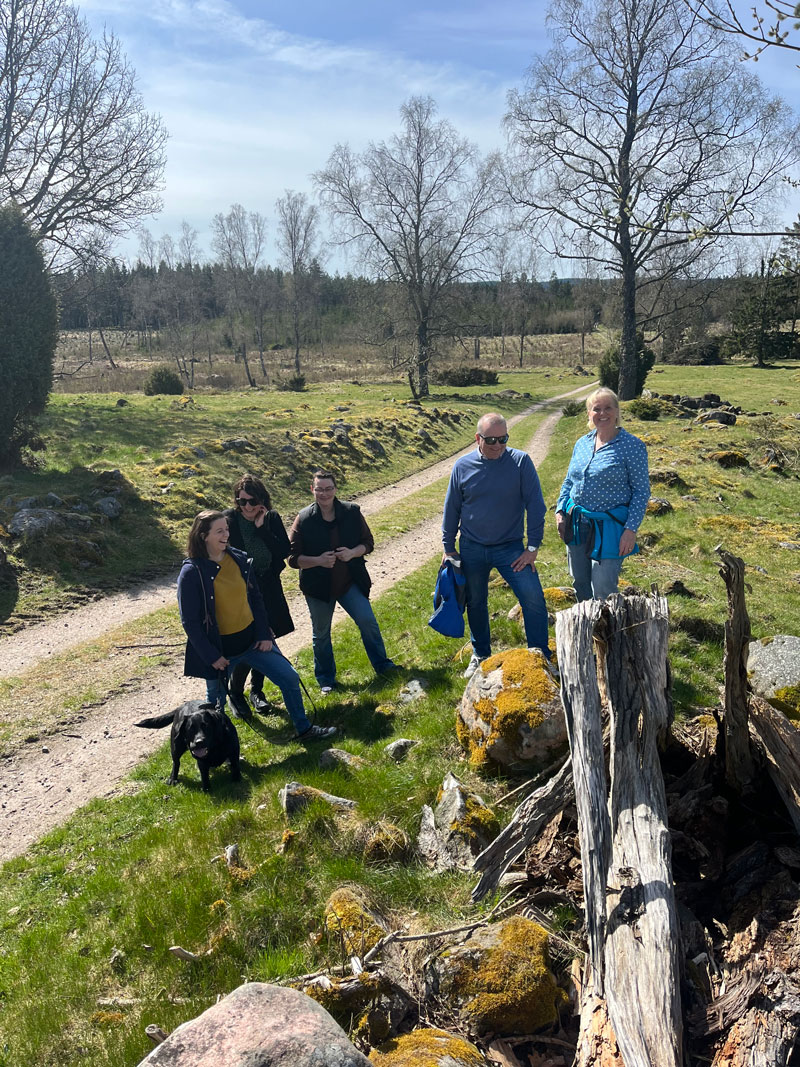
Educational quiz walk in Vårgårda, Sweden
On the last day of April, all employees at the factory in Vårgårda headed out into the woods for a lovely quiz walk. Furry friends were, of course, welcome, too! The winners received prizes – and everyone gained new insights from our work for the Swedish forest and biodiversity.
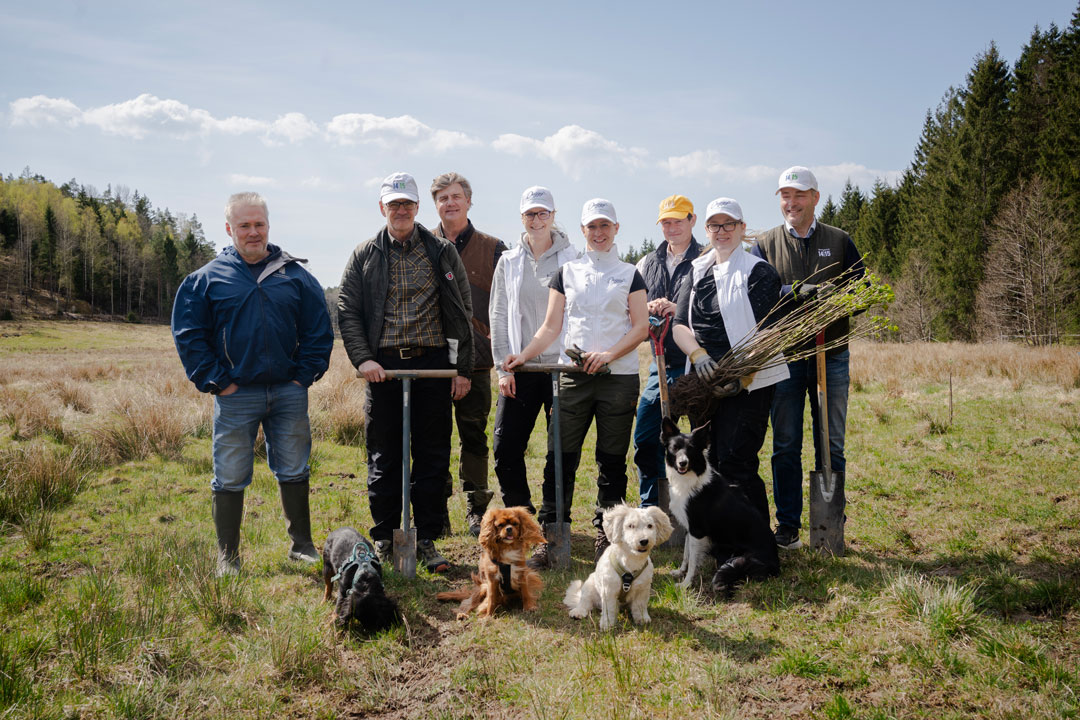
Tree planting in Tanum
In early May, we at Partner in Pet Food Nordics AB traveled to Tanum to plant trees together with landowners and representatives from Initiative 1415 and the County Administrative Board of Västra Götaland County. Our office dogs were also there, and they had the honor of breaking ground!
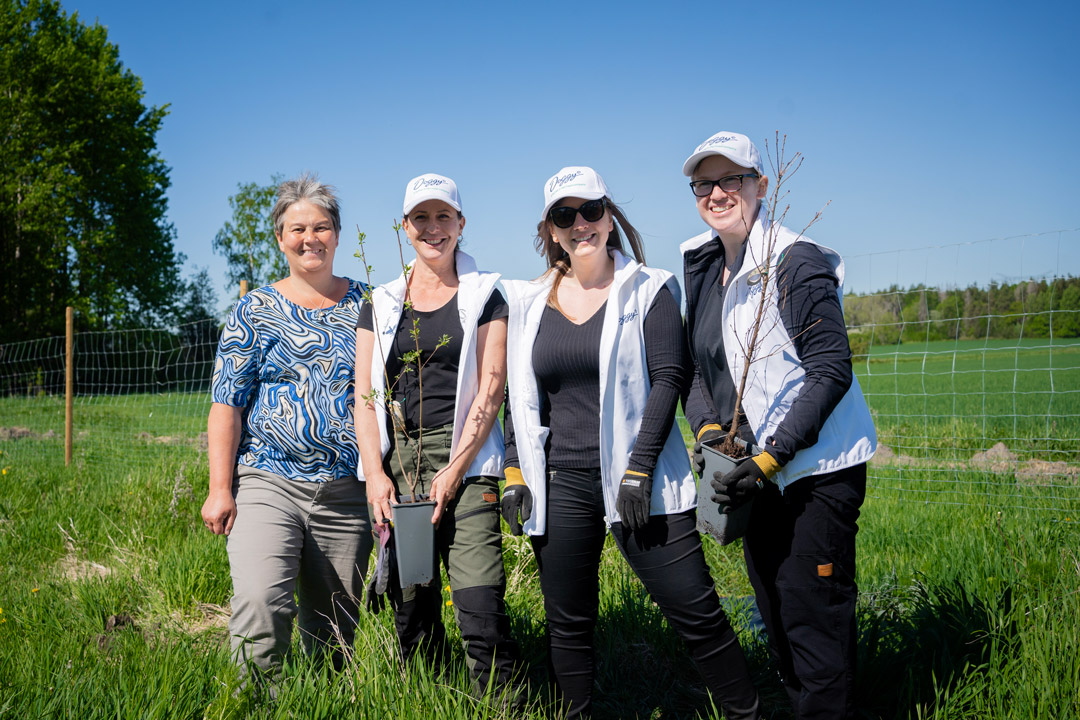
Biodiversity Day in Bålsta, Sweden
On May 22nd, the International Day for Biodiversity, we organized an internal event in Bålsta. Employees at Partner in Pet Food Nordics AB, along with representatives from Initiative 1415, the Swedish Society for Nature Conservation, and the County Administrative Board of Uppsala County, prepared the area for our little superheroes – the wild pollinators.

Part of our comprehensive sustainability efforts
Sustainability work is complex. In the Forest and Pollinators project, we address the issues from multiple perspectives and engage practically in both climate and environmental matters. Partner in Pet Food Nordics AB is part of the global group Partner in Pet Food, which is working to reduce the company’s total emissions at the group level.
How you can contribute
Partner in Pet Food Nordics AB has invested in several concrete sustainability projects and we are now heavily investing in training our staff. But everyone can help out! That is why we are now urging companies and individuals to join the movement. The more people on board, the greater the difference we can make.
Do you work as a sustainability manager or corporate leader?
Contact Lisa Müller, our marketing manager and project coordinator at Partner in Pet Food Nordics AB, so that we can tell you more about what we have done and how you can follow our example.

Quick project summary
At Partner in Pet Food Nordics AB, we want to take responsibility for our environmental impact and are currently carrying out an ambitious environmental project with a focus on carbon sequestration and biodiversity.
The project is being carried out together with the Swedish company Initiativ 1415 and is a concrete and local example of how we are actively working to increase carbon sequestration in the Swedish forest, promote biodiversity, and preserve and strengthen habitats for wild pollinators in the Swedish farmland.
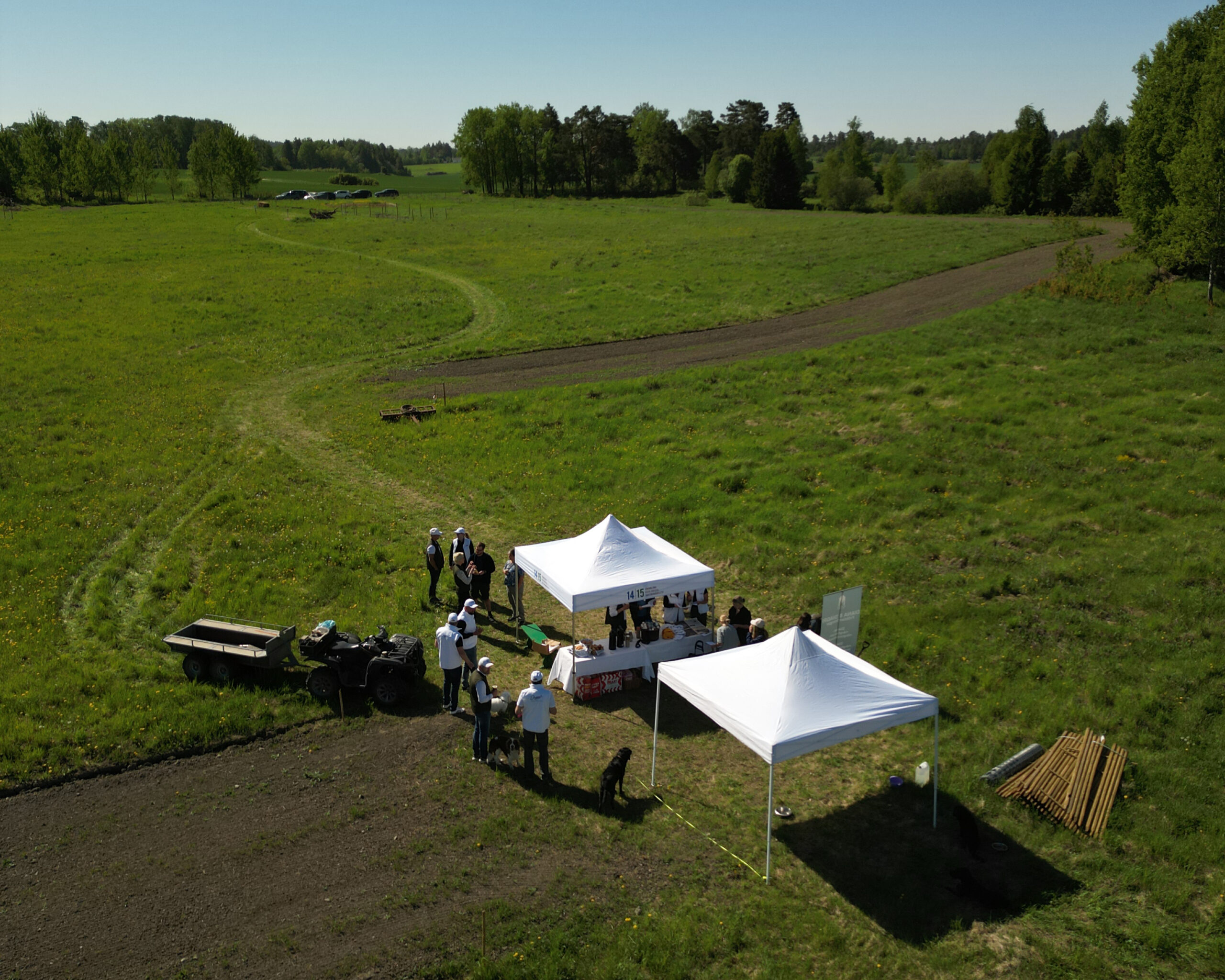
About Initiativ 1415
Initiativ 1415 is a Swedish company that offers other companies the opportunity to invest in various local projects with the aim of preserving and enhancing biodiversity and increasing carbon dioxide sequestration in Swedish forests. The investment is made through the purchase of carbon removal certificates. The carbon removal certificates consist of a mix where new forests are established, and the carbon sink is secured while preserving and enhancing biodiversity. The carbon removal certificate also contributes to the climate adaptation of forests for the expected future temperature increase.
Investments in biodiversity projects are used for example to create biotopes for pollinators in the agricultural landscape. The companies that purchase the projects can see for themselves how the money is used as well as participate in the work. The work is carried out in Sweden, follows recommendations from the Swedish Environmental Protection Agency and the Swedish Board of Agriculture, and each project is carried out in dialogue with the County Administrative Board. The name Initiative 1415 refers to global goals 14 and 15 for the conservation of marine and terrestrial ecosystems.
